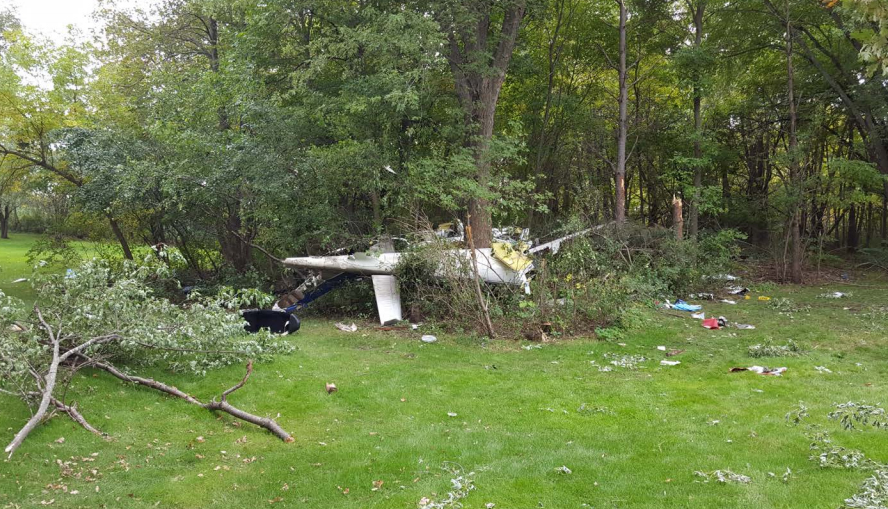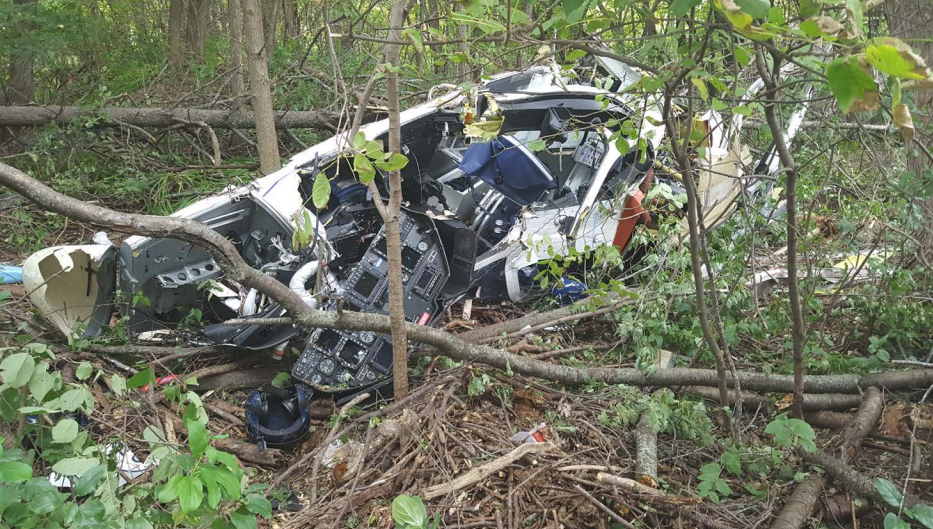A lot of pilots and passengers don’t survive what caused a medical helicopter to crash in Alexandria, Minn., in 2016, but the cause is a common one, the National Transportation Safety Board has ruled.
The pilot and two medical staff were on their way from Brainerd Lakes Regional Airport in central Minnesota to pick up a patient at night at Douglas County Hospital in deteriorating weather.
When pilot Joshua Jones couldn’t see the airport, he executed a procedure to go around and make another try. In the dark, with no visual references, Jones rolled the helicopter into the crash, according to the NTSB. The agency said it would have been a tricky maneuver to recover in the daytime, let alone night.
“Recorded flight data revealed that the helicopter climbed and made a progressive right bank that reached 50°,” the report said. “The helicopter descended as the right bank continued, and the airspeed increased until the helicopter impacted treetops. The helicopter then impacted terrain on its right side and came to rest near a group of trees.”

Incredibly, three people — Jones, paramedic Miles Weske, and flight nurse Scott Scepaniak — were pulled from the wreckage alive.

Weske was the most seriously hurt and wasn’t expected to survive, but he did. His story has been documented here over the years as he tried to get back in the air with the air ambulance company, which refused. Eventually his leg was amputated.
He was eventually fired from his paramedic job with Air Care, and sent to work in the billing department of North Memorial instead.
NTSB investigators say they found no mechanical problems with the helicopter, pinning the blame on the pilot in its report.
Correction: An earlier version of this post incorrectly described the crashed helicopter as part of Life Link. According to the NTSB, the helicopter was registered to North Memorial Health Care.
